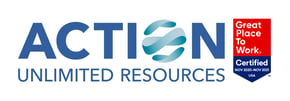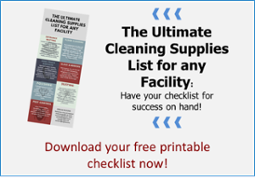
If it ain’t broke don’t fix it! Brilliant words, or the antithesis of progress?
Think about it...Were the horse and cart broken when the automobile was invented? Was fire forgotten so we developed ovens and then microwaves for cooking?
Of course not. There is always room for improvement and visionary people create it.
Innovative solutions come by way of challenging the status quo, but innovative thinking is not for everyone. Some people prefer doing the same things over and over. Maybe that’s you, and that’s okay. On the other hand, if you believe there’s always room for improvement, if you envision progress, then please read on.
If It Were Possible
When an organization embraces and seeks improvement, it’s important to remember the 3 factors critical to the success of any initiative- Communication, information, and open mindedness.
When working to develop improvements to facility cleaning and the management of janitorial supplies, the following question is helpful:
If there were no limitations, what factors would you improve regarding the cleanliness, health and safety of your facilities?
Considerations might include:
- Staff and process training
- Labor costs
- Overall performance and measurement of the results
- Communication with management and other stakeholders
This question helps to put definition around your vision without limitations. In other words, this is a picture of perfection. “Can it be done?” and “how do we do it?” are important, and they will come in due time.
All The Facts
With definition around your goal, it’s time to gather the facts. Access to information is key to optimizing this part of the process. The more effective a group is at getting all relevant information identified and included in the process, the better the results.
Gathering information on the following will greatly assist your efforts:
- Staff – number of people, existing skillsets, skills needed, etc.
- Facility – size, number of room and types of use and special requirements
- Challenges and limitations specific to your facility or team
- Process and tool review – Identify existing processes, tools, products, usage and pricing
- Measures / certifications – Current performance measures (3rd party certifications or key performance indicators)
Building The Solutions
This is where challenging the status quo really comes to life and requires a “Yes, we can” mindset. Consider all the possibilities, and remember that some ideas may not be successful out of the gate and will require a learning curve.
There is no single bullet solution for improvement projects such as this, and there are endless resources available for organizations who choose to do it themselves. Other teams choose to enlist the support of partners with tools like the Smart Site Analysis from Action Unlimited Resources.
Trial And Implementation
There are many factors that influence implementation. Scope, resources, deadlines, seasonality, as well as anything additional that may be uncovered as a potential factor should all be part of the consideration process.
Be sure to communicate early and often to everyone impacted by new programs. Make everyone aware of the expected improvements as well as communicating the timing of the transitional period. Give everyone who will be impacted by the project a voice to help identify issues during transition that will need to be addressed along the way.
When an organization communicates the vision clearly and keeps everyone involved in the transition process, successful improvements will follow. Remember, it’s likely you will face unexpected challenges along the way. Expect and embrace those challenges as opportunities to fine-tune your vision.
Measure / Adapt / Improve
Improvement programs of any sort won’t be “set it, and forget it,” as Ron Popeil of infomercial fame used to say. Identify early what specifically you are working to accomplish and the factors that will define your success. Measure the results. Analyze where you’re on track and where you may be running into challenges. Identify necessary adjustments to get back on track.
When the result’s you’re measuring begin to level off, look for opportunities to make additional improvements. Continuous improvement is not an event, it’s an ongoing process, and you control the path.
Curious what success looks like? Check out this case study at a school that decided to make a difference.





Enjoy this blog? Leave a comment or ask a question!